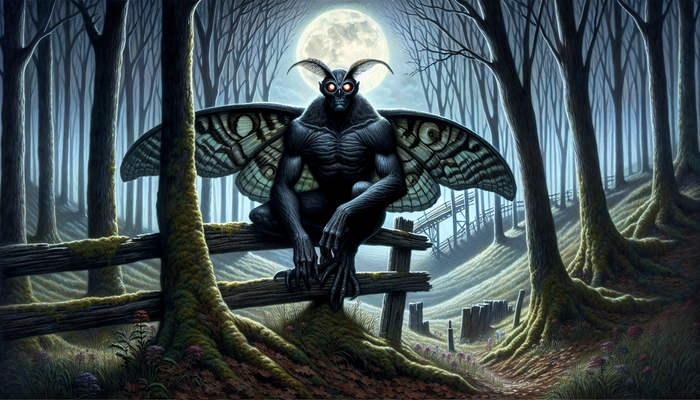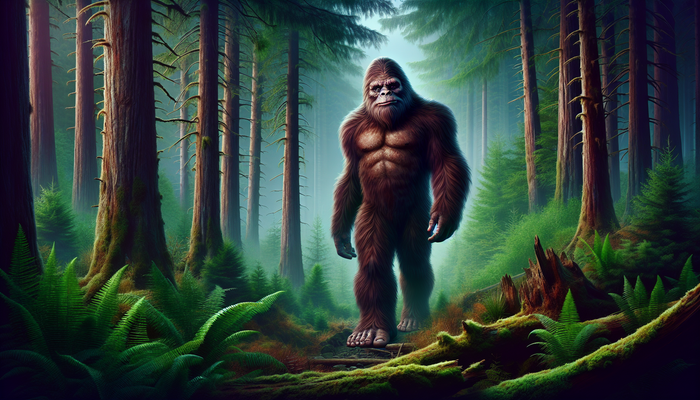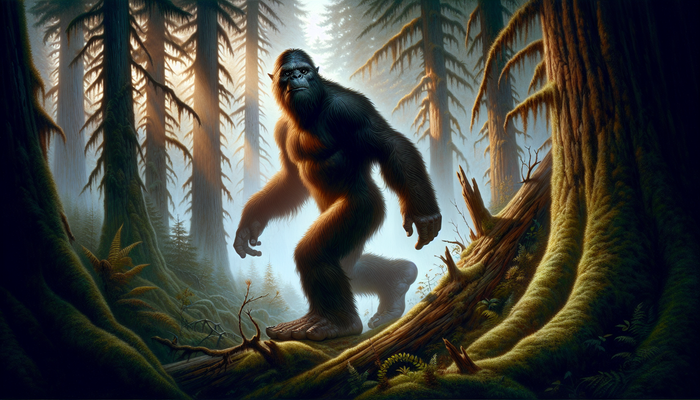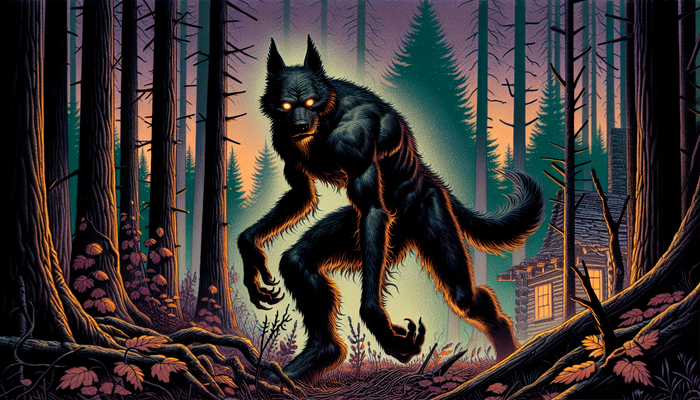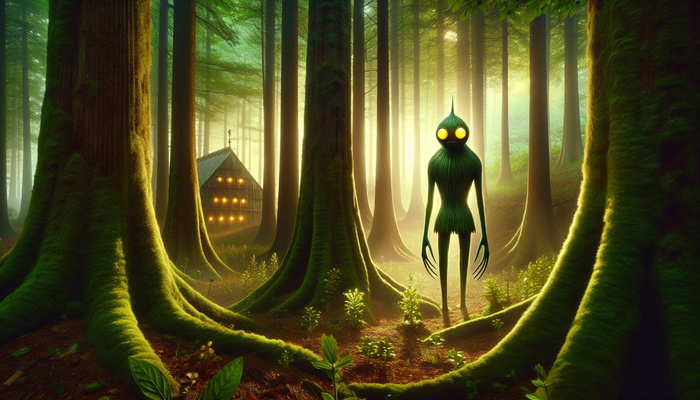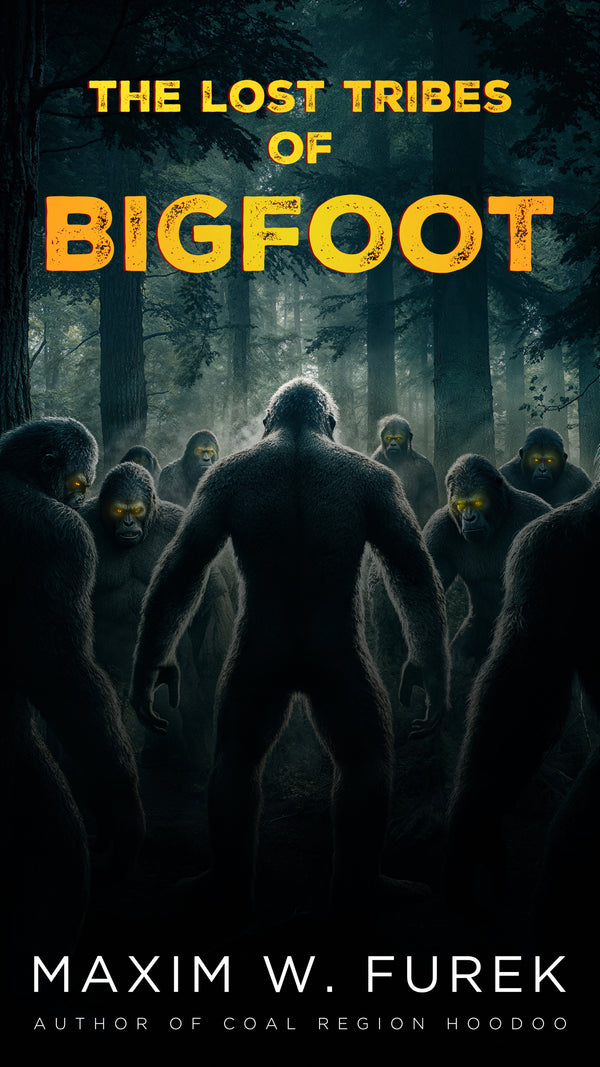Taku-He: A Deep Dive into South Dakota's Bigfoot Sightings
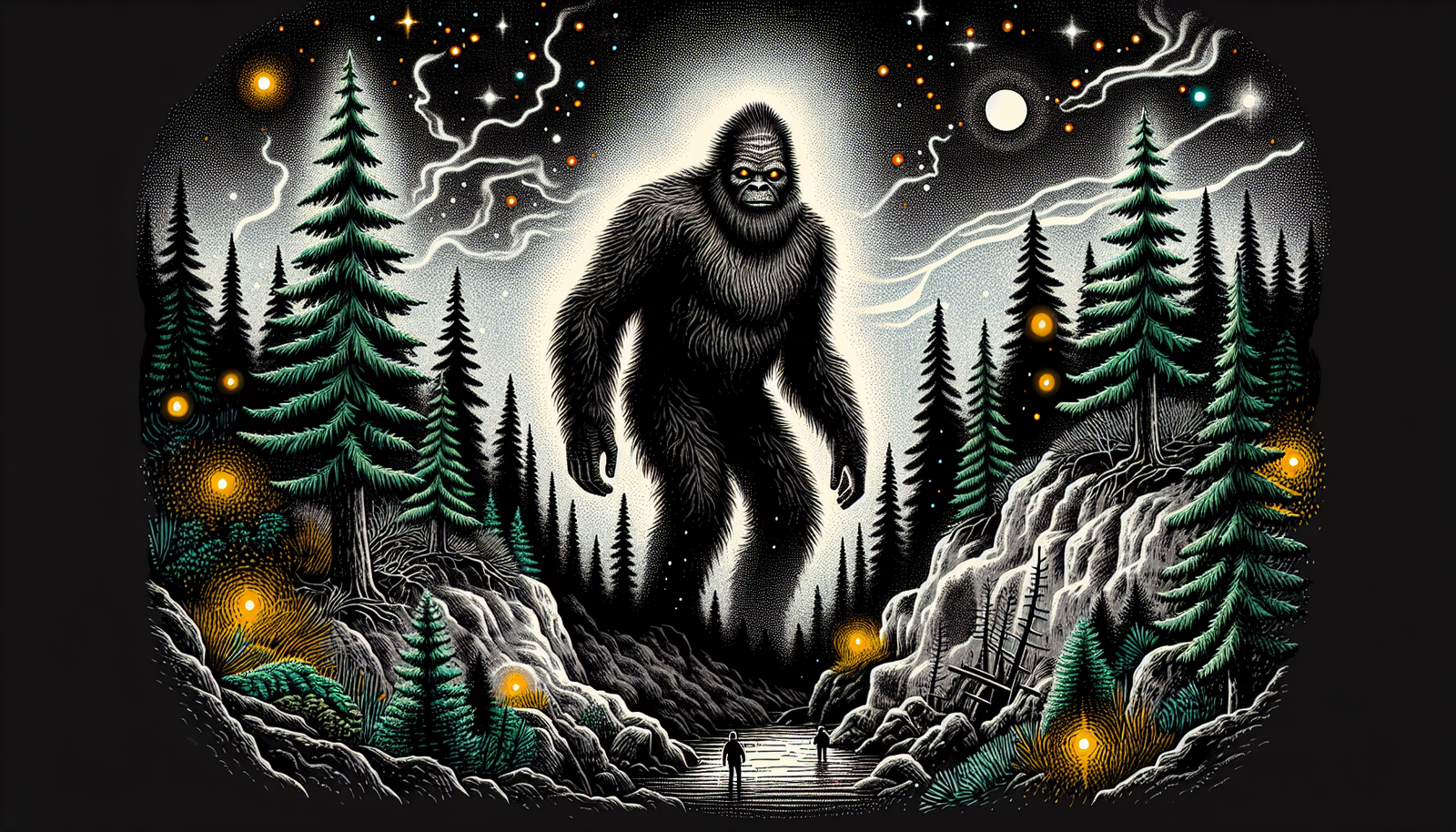
By Jack Sullivan, Cryptozoologist
In the realm of cryptozoology, few creatures have captured the imagination quite like Bigfoot. This elusive, humanoid beast has been the subject of countless tales, sightings, and investigations across North America, sparking both fascination and skepticism in equal measure. But while the Pacific Northwest may be the most well-known hotspot for Sasquatch activity, there's another region that has quietly emerged as a nexus of Bigfoot intrigue: the state of South Dakota.
As a dedicated Bigfoot researcher, I've long been intrigued by the rich history of reported encounters in this unassuming Midwestern state. From the legendary Taku-He of Lakota lore to the modern eyewitness accounts that continue to trickle in, South Dakota has proven to be a veritable treasure trove of Sasquatch sightings. In this article, I'll be taking a deep dive into the state's most compelling Bigfoot cases, exploring the cultural and historical context that has made South Dakota such a hotbed of cryptozoological activity.
The Taku-He: Lakota Legend and Lore
To truly understand the Bigfoot phenomenon in South Dakota, one must first delve into the rich mythological traditions of the Lakota people. Central to these traditions is the figure of the Taku-He, a powerful, supernatural being whose name translates to "big man" in the Lakota language.
In Lakota lore, the Taku-He is often depicted as a guardian spirit, a benevolent protector who watches over the land and its inhabitants. Some stories portray the creature as a gentle giant, a wise and ancient being who possesses a deep connection to the natural world. Others, however, paint a more menacing picture, describing the Taku-He as a malevolent predator with a taste for human flesh.
These contrasting portrayals speak to the complex and multifaceted nature of the Taku-He legend, which has evolved and adapted over generations of Lakota storytelling. But while the specifics may vary, one thing remains constant: the Taku-He is a figure of great power and mystery, a creature that exists at the boundary between the natural and the supernatural.
It wasn't until the 1970s, however, that the Taku-He would make the leap from mythological figure to modern-day cryptid. The first reported sighting occurred in 1972, when a film crew scouting locations near Sica Hollow State Park stumbled upon a set of massive footprints in the mud. Measuring over 18 inches in length, the prints were far too large to have been made by any known animal, and the crew quickly became convinced that they had discovered evidence of the Taku-He's existence.
This initial sighting was followed by a string of even more dramatic encounters, including the harrowing tale of LeMar Bear Ribs, a local man who claimed to have come face-to-face with the creature while walking home one night. According to Bear Ribs, the Taku-He was a "big hairy man" with glowing red eyes, and the encounter left him so shaken that he had to be taken to a nearby health center for treatment.
As word of these sightings spread, the Taku-He quickly became a media sensation, attracting the attention of reporters, researchers, and curiosity-seekers from around the world. In 1977, the creature's fame reached a fever pitch, with no fewer than 28 separate sightings reported in the Little Eagle and McLaughlin areas over the course of just two and a half months.
Dubbed the "McLaughlin Monster" by the press, the Taku-He became the subject of a full-scale manhunt, with tribal police and local authorities combing the countryside in search of the elusive beast. But despite their best efforts, the creature remained frustratingly out of reach, leaving behind only a trail of footprints and a lingering sense of mystery.
The Black Hills: A Bigfoot Hotspot
While the Taku-He may have captured the lion's share of the headlines, it's far from the only Bigfoot-like creature said to roam the wilds of South Dakota. In fact, the state's Black Hills region has long been considered a hotspot for Sasquatch activity, with numerous sightings and encounters reported over the years.
It's not hard to see why the Black Hills would be an attractive habitat for a creature like Bigfoot. With its dense forests, deep ravines, and vast stretches of untamed wilderness, the region offers plenty of places for a large, elusive animal to hide. The rugged terrain also makes it difficult for humans to access, providing a measure of protection from prying eyes and would-be hunters.
One of the most notorious Bigfoot hotspots in the Black Hills is Sica Hollow State Park, a place steeped in Lakota folklore and supernatural associations. The park's name, which translates to "evil" or "bad" in the Lakota language, hints at the dark and mysterious forces said to inhabit its shadowy depths.
It was here, in the 1970s, that a number of particularly dramatic Bigfoot encounters were reported. Witnesses described seeing massive, hair-covered humanoids lurking in the park's dense underbrush, their eyes glinting in the darkness like burning coals. Some even claimed to have heard the creatures' eerie, howling cries echoing through the night, sending shivers down the spines of all who heard them.
But Sica Hollow is far from the only place in the Black Hills where Bigfoot is said to roam. Other hotspots include Custer State Park and Spearfish Canyon, both of which have been the site of numerous sightings over the years. In fact, the Bigfoot phenomenon has become so ingrained in the region's culture that the town of Spearfish even boasts its own Sasquatch-themed baseball team, the Spearfish Sasquatch.
Keystone: Embracing the Bigfoot Phenomenon
If there's one town in South Dakota that has truly embraced the Bigfoot phenomenon, it's Keystone. Located in the heart of the Black Hills, this quirky little community has made a name for itself as a hub of Sasquatch-related activity, attracting believers and skeptics alike with its unique blend of kitsch and cryptozoology.
The centerpiece of Keystone's Bigfoot obsession is undoubtedly the "Big Foot Bash," an annual festival that celebrates all things Sasquatch. Held each summer, the event features a wide range of Bigfoot-themed activities, from costume contests and footprint casting demonstrations to lectures by prominent Bigfoot researchers.
But the real star of the show is the town's massive wooden Bigfoot sculpture, a 22.8-foot-tall behemoth that holds the distinction of being the world's largest Bigfoot statue. Carved from a single piece of Black Hills ponderosa pine by local artist Jarrett Dahl, the sculpture is an impressive feat of craftsmanship, with intricate details that bring the legendary creature to life in stunning fashion.
The statue's unveiling at the 2020 Big Foot Bash was a major event in Keystone, drawing crowds of enthusiastic Bigfoot fans from across the country. And while some may dismiss the sculpture as little more than a roadside attraction, there's no denying the passion and dedication that went into its creation.
For Dahl and the other organizers of the Big Foot Bash, the statue is more than just a piece of art; it's a symbol of Keystone's unique place in the world of Bigfoot lore. By embracing the Sasquatch phenomenon with open arms, the town has positioned itself as a must-visit destination for anyone with an interest in the mysterious and the unknown.
The Dickey County Encounter: A Trapper's Tale
While the Taku-He and the Black Hills may be the most well-known examples of Bigfoot activity in South Dakota, they're far from the only ones. In fact, one of the most compelling Sasquatch encounters in recent memory occurred not in the state's rugged western reaches, but in the relatively populated eastern county of Dickey.
The incident in question took place in December 2023, when a local woman spotted what she described as a "huge, hairy, ugly monster" lurking in her yard. Frightened by the creature's appearance, the woman called on her friend Christopher Bauer, an experienced trapper, to investigate.
Bauer wasted no time in tracking the creature, following a trail of massive footprints that measured a staggering 18 inches long and 8 inches wide. With a stride of over 4 feet between each print, it was clear that whatever had made them was no ordinary animal.
For over 7 miles, Bauer followed the creature's trail, noting signs of its passage along the way. At one point, he even discovered evidence that the beast had paused to pick up small animals, possibly mice or voles, as it traveled through the snowy landscape.
While Bauer never caught a glimpse of the creature itself, his account of the incident is considered one of the most credible Bigfoot sightings in recent memory. As an experienced outdoorsman with a keen eye for tracking, Bauer's testimony carries a weight that many other eyewitness reports lack.
What's more, the fact that the sighting occurred in a relatively populated area of the state, rather than the remote wilderness of the Black Hills, only adds to its significance. If Bigfoot is indeed real, the Dickey County encounter suggests that the creature may be more adaptable and widespread than previously thought.
The Bigfoot Excitement of 1977: A Closer Look
Of all the Bigfoot-related events in South Dakota's history, none have captured the public imagination quite like the "Bigfoot Excitement" of 1977. During this brief but intense period, the state was gripped by a wave of Sasquatch sightings, with reports pouring in from the Little Eagle and McLaughlin areas at an unprecedented rate.
The first sighting occurred in August of that year, when a group of police officers in the town of Green Grass reported seeing a large, hairy, ape-like creature moving through a creek bottom. The officers, who were on patrol at the time, described the creature as being between 6 and 7 feet tall, with long, shaggy hair covering its body.
This initial report was quickly followed by a string of similar sightings from local residents, including teenagers, adults, and even a young girl who claimed to have been frightened by a "foul-smelling, hairy creature" while home alone. In total, more than 28 separate Bigfoot encounters were reported over the course of just two and a half months.
As word of the sightings spread, the media descended on the area in droves, with reporters and researchers from across the country flocking to South Dakota in search of the elusive "McLaughlin Monster." The Bigfoot Field Researchers Organization (BFRO), one of the most prominent Sasquatch investigation groups in the world, even dispatched a team to document the incidents and interview eyewitnesses.
Despite the best efforts of these investigators, however, no concrete evidence of Bigfoot's existence was ever found. Some researchers speculated that the creature may have been a misidentified bear or other known animal, while others suggested that the sightings may have been hoaxes or the product of overactive imaginations.
But for many in the Lakota community, the 1977 sightings were seen as something more than just a series of isolated incidents. To them, the creature that had been spotted in the Little Eagle and McLaughlin areas bore a striking resemblance to the Taku-He of their ancestral legends, a powerful supernatural being that had long been a part of their cultural heritage.
Some even speculated that the Taku-He may have been a kind of spirit guardian, appearing in physical form to protect the Lakota people and their land from the encroachment of the modern world. Others saw the creature as a manifestation of the tribe's deep connection to the natural world, a reminder of the sacred bond between humans and the earth.
Regardless of one's beliefs about the true nature of the Taku-He, there's no denying the impact that the 1977 sightings had on the Lakota community and the wider world of Bigfoot research. Even today, more than four decades later, the "McLaughlin Monster" remains one of the most enduring and enigmatic chapters in the history of Sasquatch sightings in North America.
Sica Hollow: The Trail of Spirits
Nestled deep in the heart of South Dakota's rugged northeastern corner, Sica Hollow State Park is a place of mystery and legend. With its dense forests, steep ravines, and eerie, mist-shrouded valleys, the park has long been associated with the supernatural in Lakota folklore, and is considered by many to be one of the most haunted places in the state.
According to Lakota legend, Sica Hollow is a place of great spiritual power, a nexus point where the boundaries between the physical and the metaphysical are at their thinnest. The park's name, which translates to "evil" or "bad" in the Lakota language, is a testament to the dark and mysterious forces that are said to inhabit its shadowy depths.
It's perhaps no surprise, then, that Sica Hollow has also been the site of numerous Bigfoot sightings over the years. With its remote location and rugged terrain, the park offers the perfect habitat for a creature as elusive and mysterious as the Sasquatch.
One of the most intriguing features of Sica Hollow is the so-called "Trail of Spirits," a winding path that snakes through the heart of the park. According to local legend, the trail is a hotspot for supernatural activity, with visitors reporting a wide range of strange and unexplained phenomena along its length.
Some have described seeing glowing orbs of light hovering among the trees, while others have reported hearing disembodied voices and eerie, echoing laughter in the distance. Still others have claimed to have encountered ghostly apparitions and other spectral entities, including the restless spirits of long-dead Lakota warriors.
But perhaps the most intriguing reports are those that describe encounters with Bigfoot-like creatures along the Trail of Spirits. Witnesses have described seeing massive, hair-covered humanoids lurking in the underbrush, their eyes glinting in the darkness like burning coals. Some have even claimed to have heard the creatures' eerie, howling cries echoing through the night, sending shivers down the spines of all who hear them.
Whether these sightings are the product of overactive imaginations or genuine encounters with the unknown, there's no denying the eerie and unsettling atmosphere that pervades Sica Hollow. With its dark forests and misty valleys, the park seems to exist in a kind of liminal space between the world of the living and the realm of the dead, a place where the veil between the natural and the supernatural is at its thinnest.
And it's not just Sica Hollow that has been associated with Bigfoot activity in the area. Just a short distance to the east, the Elkhorn Buttes have also been the site of numerous Sasquatch sightings over the years, including a particularly notable incident in 1977 involving a group of police officers.
According to the officers' report, they were patrolling the area near the buttes when they spotted a massive, hair-covered creature moving through the underbrush. The beast was described as being over 8 feet tall, with long, powerful arms and a face that was distinctly human-like in appearance.
From Bigfoot to UFOs: Hangar 1 Publishing Has You Covered!
Explore Untold Stories: Venture into the world of UFOs, cryptids, Bigfoot, and beyond. Every story is a journey into the extraordinary.
Immersive Book Technology: Experience real videos, sights, and sounds within our books. Its not just reading; its an adventure.


